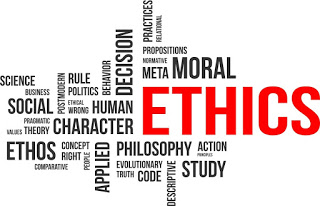Biological Basis and Ethical Considerations
There is growing evidence that psychotherapy has a biological basis. Psychotherapy has been shown to provide electrical and chemical changes in the brain to promote healing and recovery (Malhorta & Sahoo, 2017). For example, some types of psychotherapy, such as cognitive-behavioral therapy (CBT), remain visible in increasing the activity of some regions of the brain. Consequently, such as the prefrontal cortex, which remain involved in executive functions such as emotional regulation and cognition (Bertolín et al., 2022) (Biological Basis and Ethical Considerations).
The increased activity can lead to improvements in mood and behavior. Moreover, psychotherapy activates the body’s natural healing mechanisms (Fischer & Zilcha-Mano, 2022). For example, psychotherapy increases the release of oxytocin, a hormone associated with social bonding and stress reduction (Fischer & Zilcha-Mano, 2022). Oxytocin remains visible to have numerous positive effects on mental health, such as reducing anxiety and improving social functioning (Biological Basis and Ethical Considerations).

Culture, religion, and socioeconomics influence an individual’s perspective on psychotherapy treatments. Culture, religion, and socioeconomic influences stigmatizing attitudes and behaviors toward individuals with mental illness (Ran et al., 2021). Consequently, such behaviors and attitudes influence individuals’ help-seeking behavior and response to psychotherapy treatment (Biological Basis and Ethical Considerations).
Moreover, some religious groups view mental health problems as a sign of spiritual weakness or a lack of faith (Kao et al., 2020). Therefore, individuals may be less likely to seek psychotherapy. On the other hand, social and economic factors limit access to and perceived value of psychotherapy (Moleiro, 2018). Therefore, individuals from lower socioeconomic backgrounds may have limited access to mental health services due to financial barriers, lack of transportation, or inadequate insurance coverage.
In group and family therapy, the therapist must balance the needs and interests of multiple individuals, which can be challenging (Boland & Verduin, 2021). Additionally, there may be confidentiality issues, as information shared in a group or family therapy session may be more easily disclosed to others outside of the therapeutic relationship. Consequently, regarding ethical considerations, the therapist must be aware of power dynamics within the group or family and work to ensure that all members are given equal time and attention (Biological Basis and Ethical Considerations).
Additionally, the therapist remain sensitive to cultural and religious differences among group or family members and works tailors. Consequently, to ensure that these differences remain respected. Consequently, therapeutic approaches in group, individual, and family therapy vary based on the needs of the client. In addition, the specific context of the therapy session (Biological Basis and Ethical Considerations).
Moreover, In individual therapy, the therapist focuses solely on the client’s needs. Furthermore, and tailor the therapeutic approach to the individual’s specific needs and concerns. Subsequently, In group and family therapy, the therapist must consider the needs of multiple individuals. Consequently, work to find common ground that helps each group member to actively engage in the activity (Biological Basis and Ethical Considerations).
References
Bertolín, S., Alonso, P., Martínez-Zalacaín, I., Menchón, J. M., Jimenez-Murcia, S., Baker, J. T., … & Soriano-Mas, C. (2022). Right Prefrontal Cortical Thickness Is Associated With Response to Cognitive-Behavioral Therapy in Children With Obsessive-Compulsive Disorder. Journal of the American Academy of Child & Adolescent Psychiatry.
Boland, R., & Verduin, M. (2021). Kaplan & Sadock’s Concise Textbook of Clinical Psychiatry. Lippincott Williams & Wilkins.
Fischer, S., & Zilcha-Mano, S. (2022). Why Does Psychotherapy Work and for Whom? Hormonal Answers. Biomedicines, 10(6), 1361. https://doi.org/10.3390%2Fbiomedicines10061361
Kao, L. E., Peteet, J. R., & Cook, C. C. (2020). Spirituality and mental health. Journal for the Study of Spirituality, 10(1), 42-54. https://doi.org/10.1080/20440243.2020.1726048
Malhotra, S., & Sahoo, S. (2017). Rebuilding the brain with psychotherapy. Indian Journal of Psychiatry, 59(4), 411.https://doi.org/10.4103%2F0019-5545.217299
Moleiro, C. (2018). Culture and psychopathology: New perspectives on research, practice, and clinical training in a globalized world. Frontiers in Psychiatry, 9, 366. https://doi.org/10.3389%2Ffpsyt.2018.00366
Ran, M. S., Hall, B. J., Su, T. T., Prawira, B., Breth-Petersen, M., Li, X. H., & Zhang, T. M. (2021). Stigma of mental illness and cultural factors in Pacific Rim region: a systematic review. BMC Psychiatry, 21, 1-16. https://doi.org/10.1186/s12888-020-02991-5
